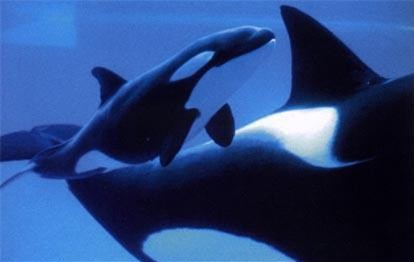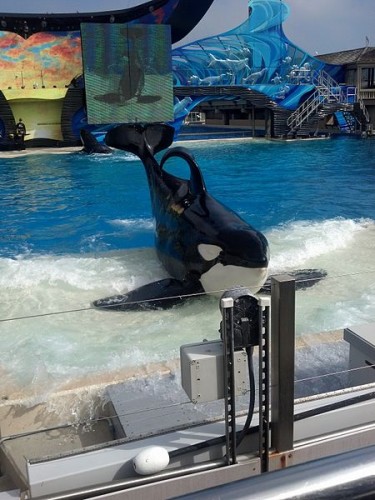In the wild, they don’t solve their problems aggressively. It’s not normal. Killer whales travel in kinship groups or clans and they don’t have those aggressive interactions. If other whales come along from a different group, they just avoid each other. Obviously, you can’t do that in a tank.”
– Researcher, Kenneth Balcomb, regarding aggression with captive orca
This is the fourth in a series of ten in which we meet one of the San Diego 10 orcas and hear from an advocate who continues to be one of the voices of these imprisoned voiceless, never stopping until the whole world listens.
After reading about Prisoner #4, Orkid, please scroll down this and “meet” one of the top San Diego 10 Prisoner Advocates. This week’s Advocate is Pamela Slater-Price, former San Diego County Supervisor.
Prisoner #4: Orkid
Age: 26
Born on September 23, 1988, during a live Shamu show at Sea World San Diego, Orkid made her debut in front of thousands of spectators. Of course, a natural orca birth in the wild wouldn’t be bombarded with the noise and cameras and invasion of such a personal entrance into the world as this baby experienced.

But Orkid was a captive being—50 percent Icelandic (from her mother, Kandu V) and 50 percent Northern Resident/Canadian (from her father, Orky) – born into the prison world of enforced performance in the name of entertainment. In fact, her parents personify really all that is wrong with captive, performing orcas.
It is no surprise that Orkid has attacked trainers on multiple occasions. Is it any wonder?
From the very beginning of her entrance into the world she encountered loss. When she was only three days old, her father Orky II, died, hence, her name in his memory, “Orky’s Kid.” Orky died of acute pneumonia and chronic wasting—which meant he lost a great amount of weight before his death. Orky’s pectorals were huge and his flukes curled completely. His tremendous size can be seen in both of his daughters, who have grown to be quite large like their father. Orky’s only living captive relatives are Orkid and Kayla. At one time Orky was actually called “Snorky.” At almost 22 feet long and 11,000 pounds, he was one of the largest whales ever held in any aquarium.
The following year of her father’s death, at just one year old, young Orkid experienced another life-changing passage in front of thousands during a live show. She watched her mother, Kandu V, bleed to death following a brutal altercation with one of the other orcas, Corky II.
Continue reading “Orca Profiles in Captivity: The San Diego 10 – #4”


